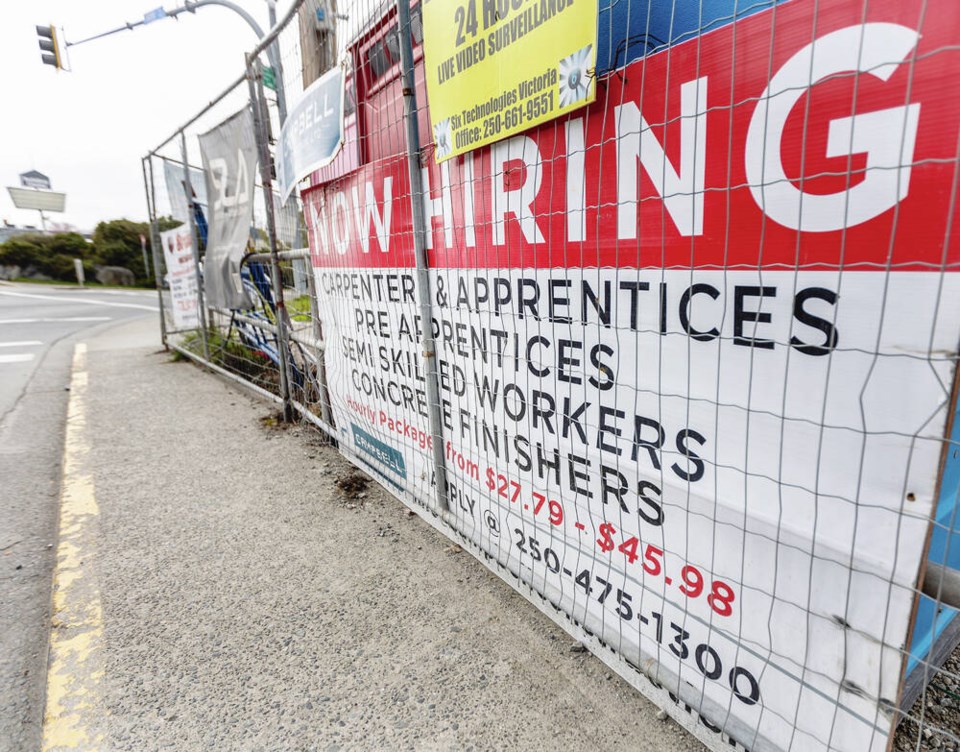Greater Victoria’s unemployment rate was virtually flat in June at 3.4 per cent compared to May’s marginally higher rate of 3.5 per cent.
The latest figure keeps the capital region rate among the lowest in Canada.
Both the labour force and employment grew in June from May, Statistics Canada said in its monthly report released Friday.
With a regional population of 362,000, the labour force came in at 220,900 in June. Labour force refers to all people working and looking for work.
Employment rose to 213,400 in June from 212,300 in May, the federal agency said.
B.C.’s unemployment rate moved up by 0.6 percentage points to 5.6 per cent as the province lost more than 6,000 part-time jobs but added 3,700 full-time jobs.
Jobs Minister Brenda Bailey said the province’s economy is holding steady, with a total of 28,400 full-time jobs added so far this year.
“With global inflation and labour shortages, we recognize this is a challenging time for many, but our economy remains strong.”
B.C.’s GDP growth of 13.7 per cent since 2017 is the highest in Canada among large provinces, Bailey said.
“In June, we had more jobs added in the manufacturing and health-care sectors, which is good news,” she said.
Statistics Canada says the Canadian economy added 60,000 jobs in June, driven by gains in full-time work.
But as more Canadians searched for work and the population continued to grow, the unemployment rate climbed higher to 5.4 per cent, the highest it’s been in a year.
“The reason the unemployment rate can rise alongside historically strong employment growth is that population growth continues to set new records — including an 84k monthly increase in June,” wrote RBC assistant chief economist Nathan Janzen in a note to clients.
June marked the second month in a row the unemployment rate has risen as economists watch for softening in the labour market amid high interest rates.
Job gains were concentrated in wholesale and retail trade, manufacturing, health care and social assistance and transportation and warehousing.
The loosening of the labour market likely comes as good news to the Bank of Canada, which is looking for signs that its aggressive rate hikes are working to cool the economy.
But forecasters are still expecting the central bank to raise interest rates at its next interest rate decision on Wednesday.
“The June labour market data was mixed but shouldn’t be enough to prevent the Bank of Canada from following through with a second straight 25 basis point interest rate hike at the next policy decision next week,” Janzen said.
The central bank opted to end its pause on rate hikes in June after a string of economic data suggested interest rates weren’t high enough.
The quarter-percentage-point rate hike brought its key rate to 4.75 per cent, the highest it’s been since 2001.
The central bank has said repeatedly that Canada’s hot labour market is contributing to high inflation, raising concerns about the pace of wage growth in particular.
However, Statistics Canada said wage growth also softened last month, rising 4.2 per cent from a year ago. That compared with a year-over-year gain of 5.1 per cent in May.
The central bank hasn’t given any clear indication of its plans, saying it will make its decision based on the economic data.



